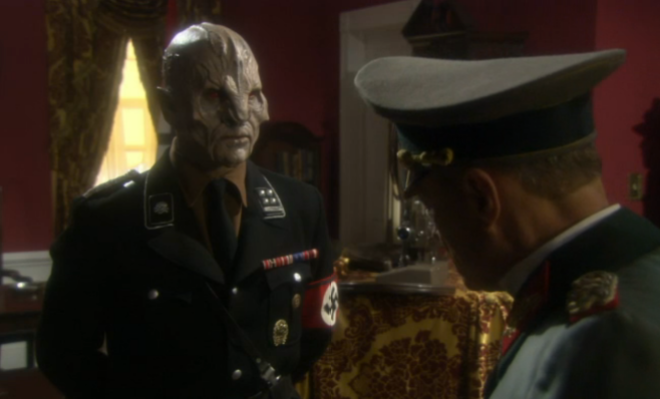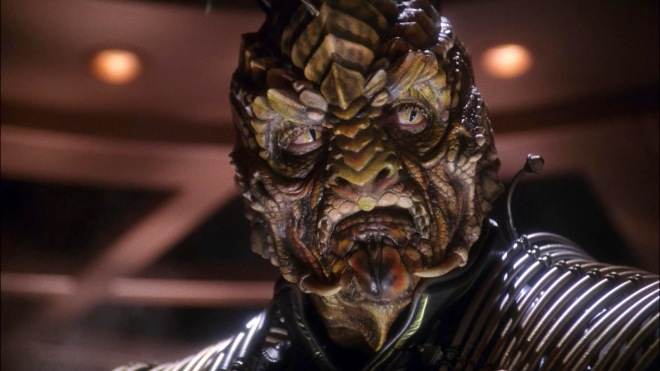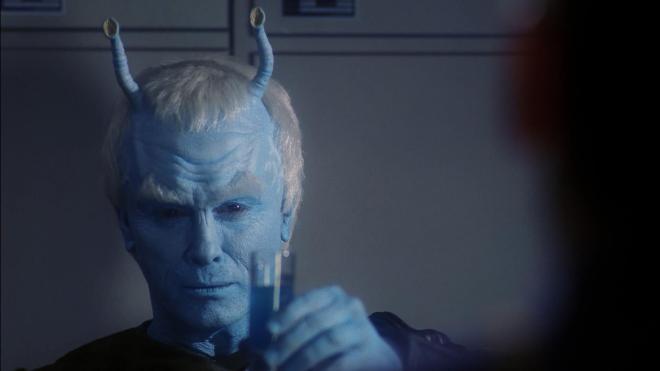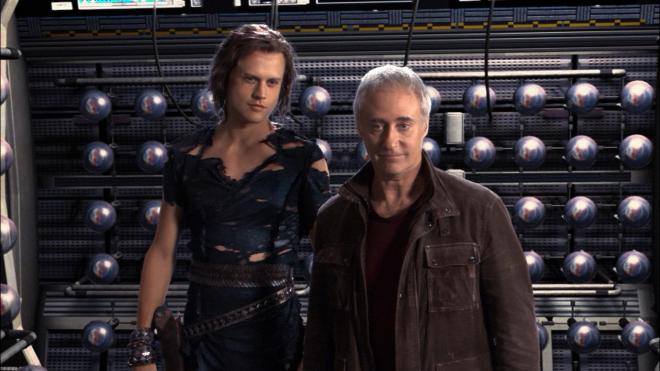By James Nelson
“Cause I got faith, of the heart/I’m going where my heart will take me/I’ve got faith, to believe/ I can do anything” are the words to my nightmares. The Suliban, the dominant villains of the first two seasons never quite came together as a legitimate threat. The “Temporal Cold War” story arch never had a proper resolution, nor made that much sense considering we had never hear of it before and this was a prequel show. Oh yeah, and that. It was a prequel show that seemed to have more advanced technology than the show it was preceding, Star Trek. But even with all those flaws, the show itself is not only fascinating, at times it tells better and more entertaining Trek stories than even The Next Generation. Enterprise, more so than any other maligned property of the franchise, deserves another, deeper look by fans, and I’m here to make the case.
The Aliens

Almost every Trek property, with the exception of Trek Wars, has done an excellent job of both establishing new alien races and furthering the mythos behind the existing one. TNG did a great job developing both the Klingons and the Romulans from rough sketches to fully fleshed out civilizations with their own societal structures and mores. Voyager did this with the Borg and the Q. DS9 did this with the Cardassians and the Bajorans. Enterprise did this with the Vulcans and the Andorians; which is surprising because they are some of the oldest creations, dating back to TOS.
In truth, this began as a divisive thing when the series was first unveiled. The Vulcans were not the ones we’d grown up with. One of the biggest themes of almost the entire series was “Don’t trust the Vulcan High Command. They lie.” It is well established fact in every other interpretation of Trek that Vulcans don’t lie. Therefore these people have obviously never watched Trek. We were wrong. The way in which the Vulcans were handled not only explored the darker origins of the Vulcans, but also the nature they are always grappling with in even better light. We even get to meet Surak, we see Vulan’s “forge,” and we grow to understand the nature of the “mind meld” in a way previously implied, but never explained. In addition, they way that Enterprise explains why the Vulcans are so different is one of the most satisfying pieces of Star Trek storytelling that I can’t ruin it.

In addition to established species, we also get a look at new races, like the Suliban and the Xindi. Granted they’re not as good as say, The Dominion, in complexity and threat level, they’re only failing are in either being not especially interesting (The Xindi), or not being fully fleshed out (The Suliban). In addition, both races were mixed up in the abysmal “Temporal Cold War” framing device that was used through the first three seasons, and they are therefore tainted by that. In addition, they both run into the prequel problem or “If these races are so cool and diverse and influential, why don’t we ever see them again?”
A Fresh Take of Trek
Granted, it’s a Star Trek show, so there’s only so much you can do differently, but they tried to do everything different; from the terrible and wretched theme song to how they integrated older tech into the show (phase pistols and manually fired torpedoes). They even had a transporter from episode one, but it took almost half the series before they started to use it to transport people, and even then it was sparingly.

This take on Trek, showing the origins of many of the feature other Trek stories take for granted (like the transporter or photon torpedoes), really set it apart and add an extra layer to the mythos. It’s nearly impossible to look up something on Memory Alpha an not see a reference to Enterprise in the early paragraphs. The show touched on so many varying things while still maintaining the tried and true formula that they must be commended for that.
Commander F#$K!@G Shran

And of course you have this guy. If for nothing else you have to watch this show to see Commander Thy’lek Shran, also known as the best recurring character in Star Trek. That is not an exaggeration. Portrayed by the indomitable Jeffrey Combs, Shran is the very picture of a badass alien who does not care what anyone of everyone thinks of him. But what makes his character better is his story arch. He goes from enemy, to antagonist, to frenemy, to staunch ally. He and Archer have a recurring tally of favors that each of them owes the other. I can continue to go on about how amazing Shran is, but you just have to watch the show. His performance is everything.
Season Four

Any self respecting Trek fan has to watch season four. It’s a special season, and partly because I feel like the writers knew the show might not make a season five, and wanted to get all their best stories out, therefore they spend the majority of the season writing not episodes, but archs, each one being a two to four part episode, which essentially divides the season into four arcs: The one where you find out why the Klingons lost their ridges, the one in which you find out Data’s grandfather created augments (basically Khan), the one why you find out what’s up with the Vulcans, and the one where you see the mirror universe. There’s more than this in that season, but those sum up the best stories, and each one of them deepens the richness of Star Trek in ways no other series has.
In short, it’s a great show, and it has faults, but in the end, it’s quintessential Star Trek. It’s about a crew of people going into the beyond to see what’s out there. Go watch it if you haven’t yet, and don’t judge a show by it’s theme song.




